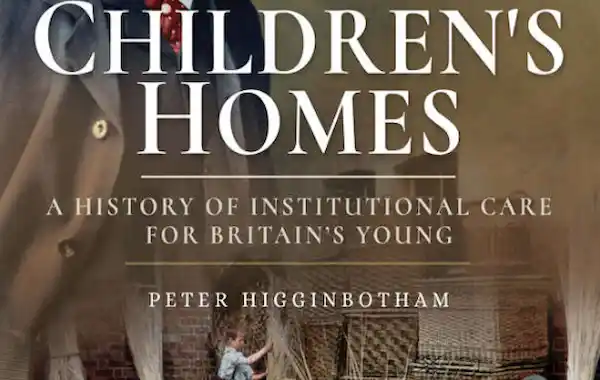02 October 2017
|
Did any of your ancestors spend time in a children's home, orphanage or one of the many other institutions established to care for Britain's young in the past? Learn more about their lives in Peter Higginbotham's new book, Children's Homes
Peter Higginbotham is well-known within the family history community for his excellent Workhouse website and books on the topic, and recently popped up in the latest UK series of Who Do You Think You Are? sharing his vast knowledge with TV presenter Fearne Cotton, as she learned about her ancestor’s precarious employment as a workhouse doctor.
He also runs the equally useful Children’s Homes website and has now turned his wealth of research findings into a new book, providing a comprehensive history of the various British institutions that have provided care for children and young people over past centuries.
The mental image of a Victorian orphan in the workhouse is concreted in the national consciousness by Oliver Twist. However, Children’s Homes explores an astonishing array of institutions from as early as the mid-16th century. Christ’s Hospital (later known as the Blue Coat School, due to the inmates’ uniforms) opened its doors to 340 fatherless youngsters in 1552 and is believed to have been England’s first institutional home for poor or orphaned children. As well as charity schools and homes or ‘asylums’ for orphans, there were local authority, religious and occupational homes, reformatories, ragged, industrial, truant and approved schools, training ships, institutions for impoverished children or those with special needs, and ‘boarding out’ (what we know as fostering today).
Join the Family Tree community
Follow us on facebook
Follow us on twitter
Sign up for our free e-newsletter
Discover Family Tree magazine
This book not only examines how these institutions operated and evolved, in the context of changing societal views, but also the key people behind them and the lives of children who grew up within them; their clothing, food, treatment, welfare and discipline, learned trades, typical routines, licence and discharge. Peter Higginbotham doesn’t shy away from reporting the scandals and controversies associated with the treatment of young people in care, including child emigration schemes. The mid-19th century onwards saw large numbers of child emigrants sent mostly to Canada and South Africa by local authorities and charitable institutions (as many as a thousand Barnardo children alone made the journey a year between the 1880s and 1915). Australia began a campaign to expand its population after the First World War, with children sent to institutions such as the Fairbridge Farm School, and migration did not completely end until 1967.
Clearly, seeking children’s home records is an uphill challenge. Large numbers of homes no longer exist and, until recently, there was no legal requirement for records to be preserved. However, after providing a valuable insight into the history of children’s homes, the final chapter supplies resources, useful websites and practical advice to help researchers to try to trace an ancestor or relative who found themselves in care, and learn a little more about their lives.
• ISBN: 9781526701350. RRP £14.99, paperback, £10.79 Kindle. Pen and Sword History.









